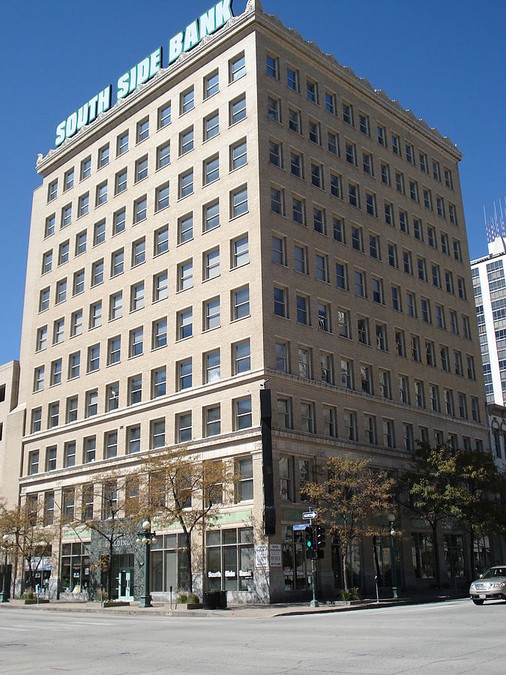Central National Bank Building (Peoria, IL)
Introduction
Text-to-speech Audio
Peoria's Central National Bank Building was constructed between 1913 and 1814 and designed by the architectural firm of Daniel Burnham. At the time of its construction, Burnham's firm was one of the largest in the world. However, Burnham himself had died two years before its completion. The ten-story building is indicative of the rapid growth of Peoria between the turn of the century and the early 1900s. At the time, Peoria's leading industries were connected to agriculture including milling, the production of farm equipment, and over twenty distilleries.
Images
Central Bank Building, Peoria, IL.

Backstory and Context
Text-to-speech Audio
The Central Bank Building (1914-15) stands as a ten-story office building designed by D.H. Burnham & Company featuring a three-part commercial block form constructed in steel and concrete-framing with Classical, Renaissance Revival ornamentation. Burnham did not see the building to its fulfillment; he died two years before its completion. At the time of his passing, his Chicago-based architectural firm was the largest in the world.
The banking building emerged during the heart of a period when Peoria experienced notable, consistent population growth. The population of Peoria increased from a little more than 40,000 in 1890 to 105,000 in 1940, with more if one includes nearby towns. At the time, Peoria was known for its rail and river transportation as well as a host of bars and liquor production. Liquor manufacturers took advantage of the railways and Illinois River, as well as the town's proximity to corn farms, which could be used in making grain alcohol. Many of the city's largest houses were built by those in the town's liquor industry, and banks benefited from their success.
In addition to supporting a thriving town, the three-tier building enjoys unique architectural features. Eye-catching pilasters with granite bases dominate the lowest floors along with storefront windows, and green tiles. Yellow brick and double-hung, square windows stand out as the main features above on the middle and upper levels. In 1948, the original Classical main entrance was remodeled to include green granite panels up to the second-story window sills, providing the building with an updated, modernized appearance.
All told, the building stands as a reminder of the rise in an urban skyscraper during the late nineteenth and early twentieth centuries, with Daniel Burnham an exceptionally significant part of that movement. From the Gilded Age into the Progressive Era, banks grew in popularity including in Peoria where liquor industries and other rising business grew as the population grew.
Sources
Harland Bartholomew & Associates. A comprehensive city plan, Peoria, Illinois. Peoria: Greater Peoria civic Association, 1937. http://hdl.handle.net/10111/UIUCOCA:comprehensivecit00harl.
Kalogeresis, Nicholas P. "Registration Form: Downtown Peoria Historic District." National Register of Historic Places. illinois.gov. April 22, 2018. https://www2.illinois.gov/dnrhistoric/Preserve/SiteAssets/Pages/illinois-historic-sites-advisory-council/Peoria%20--%20Downtown%20Peoria%20Historic%20District.pdf
Peoria Illinois History. Peoria.com. Accessed May 06, 2019. https://www.peoria.com/community/history.php.
Photo Sources
Central Bank Building: By Esvobod2 - Own work, CC BY-SA 3.0, https://commons.wikimedia.org/w/index.php?curid=21549867.
Kalogeresis, Nicholas P. "Registration Form: Downtown Peoria Historic District." National Register of Historic Places. illinois.gov. April 22, 2018. https://www2.illinois.gov/dnrhistoric/Preserve/SiteAssets/Pages/illinois-historic-sites-advisory-council/Peoria%20--%20Downtown%20Peoria%20Historic%20District.pdf
Peoria Illinois History. Peoria.com. Accessed May 06, 2019. https://www.peoria.com/community/history.php.
"The Plan Comes Together." Electronic Encyclopedia of Chicago. chicagohistory.org.. Accessed May 6, 2019. http://www.encyclopedia.chicagohistory.org/pages/300004.html.
Photo Sources
Central Bank Building: By Esvobod2 - Own work, CC BY-SA 3.0, https://commons.wikimedia.org/w/index.php?curid=21549867.
